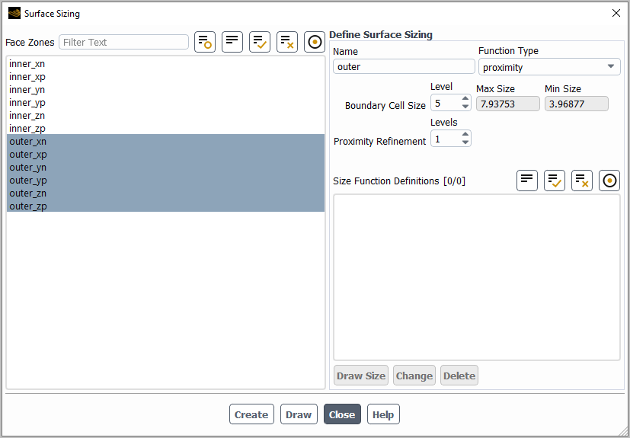When using the Boundary Projection treatment method as part of the Rapid Octree mesher, you can opt to use proximity-based surface sizing to set up local refinement settings for individual or groups of zones. This function type can be preferable to the global feature angle refinement or the curvature-based surface sizing when you have gaps and smaller openings, as it can avoid the unwanted closing of flow paths due to defeaturing. To use proximity-based surface sizing, perform the following steps:
Enable beta features using the
/beta yes OKtext command.Open the Rapid Octree dialog box from the Mesh menu.
Mesh → Rapid Octree...
Select Boundary Projection from the Method list in the Boundary Treatment group box.
Click the button at the bottom of the Mesh Parameters group box, to open the Surface Sizing dialog box.
Select one or more Face Zones.
In the Define Surface Sizing group box, enter a Name for the surface sizing definition.
Select proximity from the Function Type drop-down list.
Specify the Levels of refinement that you want for the Proximity Refinement.
Note: When using proximity-based surface sizing, note the following:
In order to properly resolve the gaps in your mesh, you must specify a cell size that ensures that the smallest gap width is resolved with at least 3 cells.
A large discrepancy between the maximum and minimum cell sizes leads to a significant increase in the time needed to generate the mesh. It is recommended that you limit the number of refinement levels if the mesh generation time increases too much.
False positives for the proximity detection can lead to unwanted refinements, especially if the mesh coarsening exponent is set to 2 or higher. It is recommended that you limit the use of the proximity function only to relevant surface zones in order to avoid such false positives.



